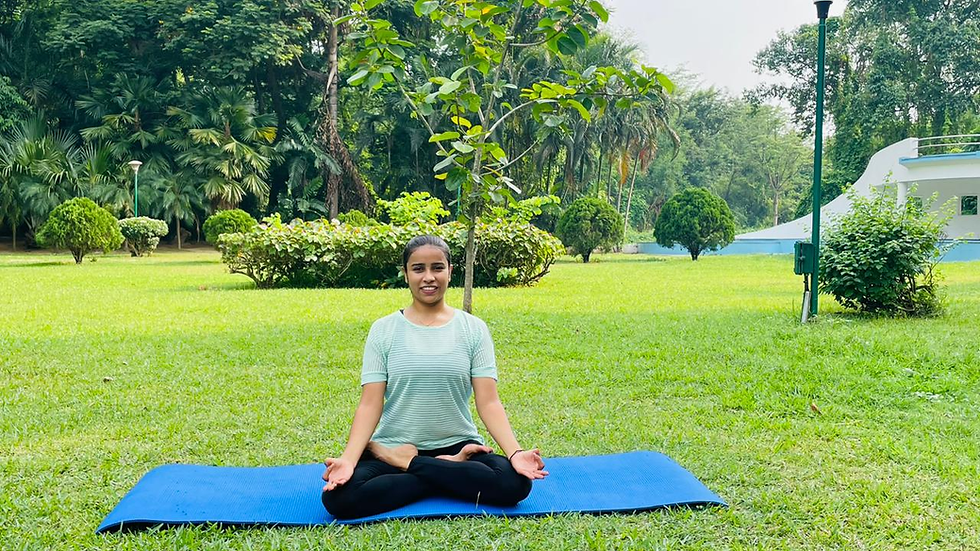Meditation for Stress: Simple Techniques That Work Fast
- Amelia Leo
- May 21
- 4 min read
In today's fast-paced world, stress is an unavoidable part of life. Work deadlines, personal commitments, and constant digital connectivity can easily overwhelm even the strongest among us. Fortunately, meditation for stress offers a powerful, natural way to calm the mind and restore balance quickly. This article explores simple, effective meditation techniques that work fast to relieve stress, improve mental clarity, and promote overall well-being.

What Is Meditation for Stress?
Meditation is a mind-body practice that involves focusing your attention and eliminating the stream of jumbled thoughts that may crowd your mind. When practiced specifically for stress relief, meditation helps calm the nervous system and reduce the body's stress response.
By using meditation for stress, you engage in a process that lowers heart rate, reduces blood pressure, and encourages a deep sense of relaxation. Unlike medications or other quick fixes, meditation provides a sustainable, long-term solution to managing stress naturally.
Why Choose Meditation for Stress Relief?
Stress affects millions of people worldwide, leading to physical and emotional issues such as anxiety, insomnia, headaches, and even heart disease. Meditation for stress is a proven, accessible method that requires no special equipment and can be done anywhere.
Benefits of Meditation for Stress
Immediate Relaxation: Even short meditation sessions (5-10 minutes) can rapidly reduce tension.
Improved Emotional Health: Regular meditation enhances mood and reduces symptoms of anxiety and depression.
Better Focus and Clarity: Meditation trains the mind to stay present, improving concentration.
Enhanced Sleep Quality: Meditation before bedtime promotes restful sleep, which is vital for stress management.
Boosts Immunity: Stress weakens the immune system, and meditation helps strengthen it by promoting balance.
How to Start Meditation for Stress: Step-by-Step Process
Starting meditation for stress doesn’t require complex rituals or long hours. Here’s a simple process anyone can follow:
Step 1: Find a Quiet, Comfortable Space
Choose a quiet place where you won’t be disturbed. Sit or lie down comfortably. You can use a chair, cushion, or yoga mat—whatever feels best.
Step 2: Set a Time Limit
Begin with just 5 to 10 minutes a day. As you get comfortable, gradually increase the duration.
Step 3: Focus on Your Breath
Close your eyes and take slow, deep breaths. Pay attention to the sensation of air entering and leaving your nostrils or the rise and fall of your chest. This simple focus helps calm racing thoughts.
Step 4: Use a Meditation Technique
Choose one of the following simple meditation techniques for stress relief:
Mindfulness Meditation: Observe your thoughts without judgment, gently bringing your focus back to your breath whenever your mind wanders.
Guided Meditation: Use an audio recording or app that provides verbal instructions and calming imagery.
Mantra Meditation: Repeat a calming word or phrase (such as “peace” or “relax”) silently or aloud.
Body Scan Meditation: Focus attention sequentially on different parts of your body, noticing tension and releasing it.
Step 5: End Gently
When your session ends, slowly open your eyes. Take a moment to notice how you feel before getting back to your day.
Fast Meditation Techniques That Work
If you’re short on time or feeling overwhelmed, these fast meditation techniques can provide immediate relief:
1. Box Breathing
Inhale for 4 seconds.
Hold the breath for 4 seconds.
Exhale for 4 seconds.
Hold the breath out for 4 seconds.
Repeat 4-6 cycles. Box breathing reduces anxiety and quickly calms the nervous system.
2. 5-4-3-2-1 Grounding Technique
Focus your attention by naming:
5 things you see,
4 things you feel,
3 things you hear,
2 things you smell,
1 thing you taste.
This sensory meditation helps bring you to the present moment, reducing stress rapidly.
3. Quick Body Scan
Spend one minute mentally scanning your body from head to toe, noticing areas of tension and consciously relaxing them.
Common Questions About Meditation for Stress
How Long Does It Take to Feel Benefits?
Many people notice immediate relaxation after a single session, but consistent daily practice provides the best long-term results. Studies suggest that practicing meditation for 10-20 minutes daily can significantly reduce stress within a few weeks.
Can Meditation Replace Medication for Stress?
Meditation is a complementary tool and not a replacement for professional medical treatment. However, it can reduce reliance on medication by helping manage symptoms naturally. Always consult your healthcare provider before making changes to your treatment plan.
Is It Normal to Have a Busy Mind During Meditation?
Yes, it’s very common to have thoughts during meditation. The goal is not to empty your mind but to observe thoughts without attachment and gently bring your focus back to your breath or chosen technique.
Post-Meditation Care: How to Maintain Calm Throughout the Day
Meditation for stress is most effective when paired with mindful lifestyle habits. After meditating, try these tips to extend your calm state:
Stay Hydrated: Drinking water supports your body's stress recovery.
Limit Screen Time: Reduce exposure to stressful news and social media.
Practice Gratitude: Spend a minute reflecting on things you’re grateful for.
Engage in Light Exercise: Walking or stretching helps maintain relaxation.
Maintain a Consistent Routine: Meditate at the same time each day for best results.
Final Thoughts: Making Meditation for Stress a Daily Habit
Stress is a natural part of life, but it doesn't have to control you. Meditation for stress is a simple, effective, and fast-acting tool that anyone can use to regain peace of mind. By dedicating just a few minutes each day to meditation, you can experience profound improvements in your mental and physical health.
The key to success is consistency and finding the techniques that resonate with you. Whether it’s mindfulness, guided meditation, or fast breathwork exercises, the important thing is to start—and keep going.
Take a deep breath, close your eyes, and begin your journey toward a calmer, more centered you today.












Comments